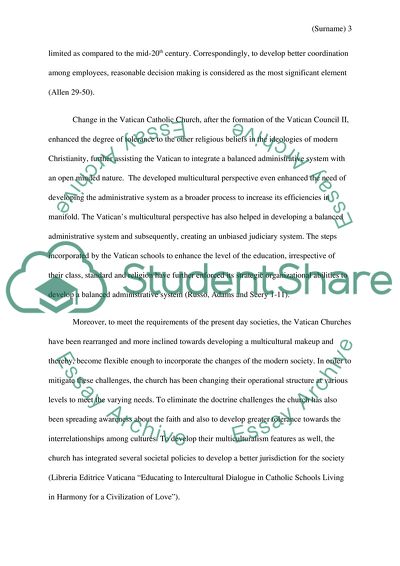Cite this document
(Vaticans Organizational and Operational Structures Coursework Example | Topics and Well Written Essays - 3000 words, n.d.)
Vaticans Organizational and Operational Structures Coursework Example | Topics and Well Written Essays - 3000 words. https://studentshare.org/religion-and-theology/1838039-behind-the-scenes-at-the-church-and-honest-responses-to-hard-questions
Vaticans Organizational and Operational Structures Coursework Example | Topics and Well Written Essays - 3000 words. https://studentshare.org/religion-and-theology/1838039-behind-the-scenes-at-the-church-and-honest-responses-to-hard-questions
(Vaticans Organizational and Operational Structures Coursework Example | Topics and Well Written Essays - 3000 Words)
Vaticans Organizational and Operational Structures Coursework Example | Topics and Well Written Essays - 3000 Words. https://studentshare.org/religion-and-theology/1838039-behind-the-scenes-at-the-church-and-honest-responses-to-hard-questions.
Vaticans Organizational and Operational Structures Coursework Example | Topics and Well Written Essays - 3000 Words. https://studentshare.org/religion-and-theology/1838039-behind-the-scenes-at-the-church-and-honest-responses-to-hard-questions.
“Vaticans Organizational and Operational Structures Coursework Example | Topics and Well Written Essays - 3000 Words”. https://studentshare.org/religion-and-theology/1838039-behind-the-scenes-at-the-church-and-honest-responses-to-hard-questions.


